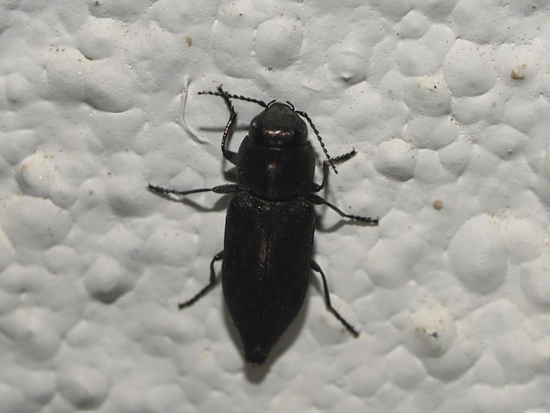Fire-Chasing Beetles Can Sense Infrared Radiation 130 Kilometers Away
Whilst most critters would be running away from a blaze, there are a brave few who run in. No, this isn’t the story of some anthropomorphic animal turned firefighter; it’s the story of one particular genus of beetle. The genus Melanophila are often referred to as fire-chaser beetles due to their peculiar habit of rushing into hot situations in order to lay their eggs in burnt trees. Now, however, researchers are suggesting that they can sense the infrared radiation produced from fires up to 130 kilometers away.
Using data gathered from a freak event in August 1925 where lightning ignited an oil depot, Helmut Schmitz from Bonn University and Herbert Bousack from the Jülich Research Centre constructed a model to estimate how far the beetles would have had to travel. You see, while hundreds of barrels of oil went up in the blaze, the nearby area was deforested. There hadn’t been any fires of note nearby so the beetles wouldn’t have had any kind of nest. The closest forested area was at least 10 kilometers away.
But Schmitz and Bousack don’t think they traveled 10 kilometers. They suggest they came from Sequoia and Kings Canyon National Park, nearly 130 kilometers away. Using standard procedures to assess fire risk and safety, they created a simulation of the event which told them how much heat it would have given off. In order to measure that from 130 kilometers away, the beetles would have to be able to detect changing heat flux at a minimum of 0.13 milliwatts per square meter. That’s about as strong as a radio telescope and far stronger than the current infrared detectors currently out there.
Because any detection at a distance would likely be masked in thermal noise, the two posit that the beetles may be utilizing something known as stochastic resonance to sort it out. Using this, the signal can actually contrast strongly with the background if the amount of noise around it increases. This is their “reasonable” hypothesis on the matter, though it would take much more study and experimentation to prove it.
Needless to say, these beetles are determined. It’s like Homeward Bound meets A Bug’s Life with a dash of Backdraft. I would pay to see that.
(PLoS ONE via Discover Magazine, image credit via fturmog)
- MIT developed a jet-injection device that’s awesome
- Researchers developed a nanotube to determine fruit ripeness
- Study finds that hearing and touch are linked genetically
Have a tip we should know? [email protected]
